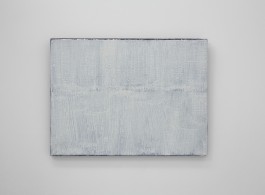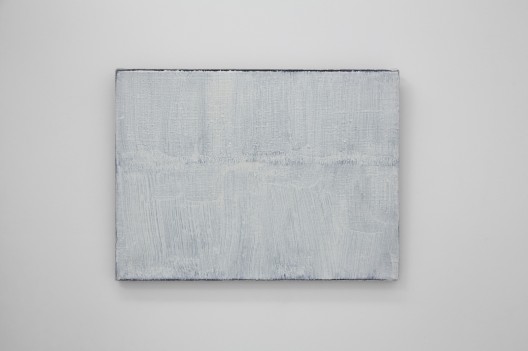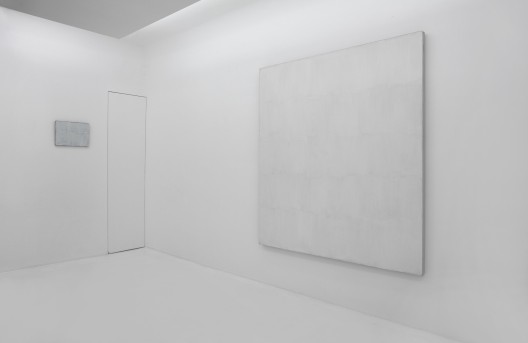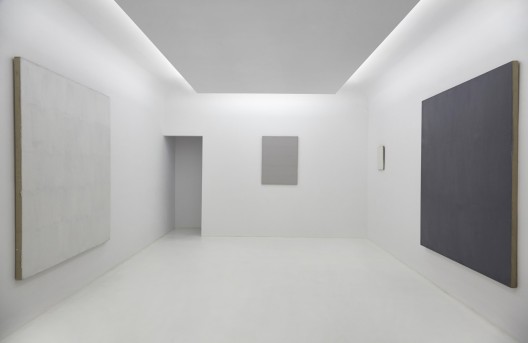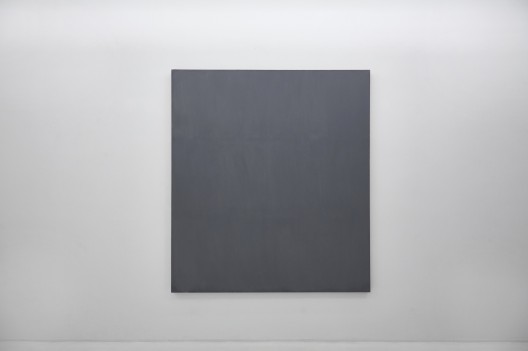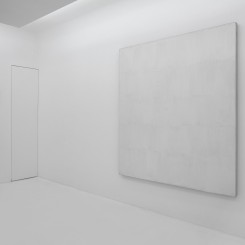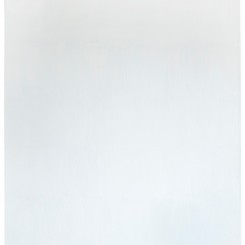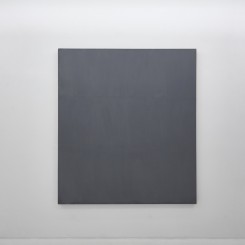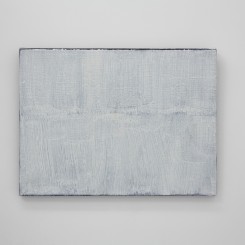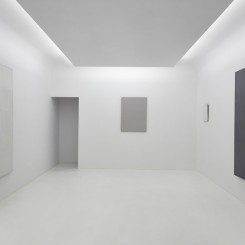In Between White
Axel Vervoordt Gallery is proud to present its first solo show of German painter Raimund Girke (1930 -2002) in Hong Kong. The works on show are monochromes, highlighting the second half of the Girke’s career, and focus on silence and serenity, thus obtaining a distinct meditative character.
At the age of 27, Raimund Girke decided that the colour white was to play a central role in his art. He felt that other colours would obstruct one’s feelings towards the calmness of the continuous changes in nature. He described his painting as a clear reaction to the visual stimulus satiation and as an attempt to take the observer to a new level of concentration.
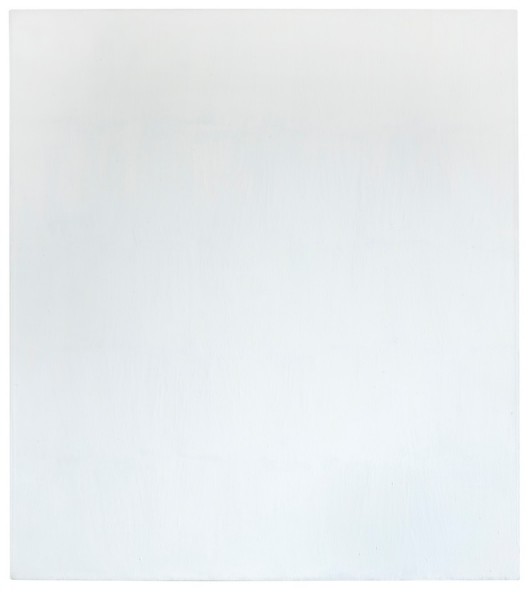
Raimund Girke “Untitled” 1980 (image courtesy the estate of the artist and Axel Vervoordt Gallery. Photographer Jan Liégeois)
As he stated in 1965 in one of his writings: “White demands meditation.” -1- During the decades that followed, he remained within the basic paradigm of controlled geometric abstraction, but instead of musing on non-visible, spiritual or conceptual phenomena, he explored fundamental physical phenomena such as light, motion, rhythm and vibration. In an exhibition text written in 1960, he elaborated on his focus:
Polychromy prevents colour from making an impact, given the constant competition, whereas the restriction of the colour scale enables one colour to manifest its full intensity. The brightest colour, the most luminous and intense colour, is white. White is the Queen of Colours; for colours are the “actions of the light” (Goethe) and white is the colour most akin to the light. Black and grey intensify white, supporting it, while playing only a subordinate role themselves. They modulate white in its infinitesimal nuances, causing it to vibrate and imbuing the colour over the whole picture surface with continuous movement, and thus with life. -2-
It is of little surprise then that the best art for him was the “absolute reduction to the essence”. Throughout his life he was fascinated by the “high aesthetics and intensity of (…) simplicity”. -3- This fascination led to signature elements like a repetition of gestural brushstrokes and subdued structures and a tension between sobriety and emotion. Despite the apparent calm, there is movement and despite the seeming superficiality, there is depth. All those elements in turn resulted in a remarkable continuity in his body of work. Something Girke himself noted in an interview that took place in late 2001:
It seems to me that the 1980s had a parallel in my early 1950s phase, where there are also stronger contrasts and movements, where the unanticipated, imponderables, also slip in and are accepted. I’m inclined to believe that since the early 1990s I’ve been going through another phase where I’m increasingly referencing my paintings of the early 1960s and 70s, where the paintings are becoming more tranquil again, more cohesive, more open-ended and yet more unified, where the colour or pictorial field is not ploughed up by brushstrokes. (…) I believe that right now my paintings are again imbued with a largesse, a certain tranquillity and peace. -4-
An almost monochrome-white picture design with the finest differentiation in colour and light reached its peak in his works of the 1970s, of which those for Documenta 6 in 1977 are best known. His compositions, which had been rhythmitized and full of gestures onto that point, became maze-like, clearly structured image fields. In order to attain a subtle shading of white’s nuances, Girke switched brush and spatula for an airbrush with which he sprayed a haze of paint onto his canvases. Whereas the personal flow was almost absent in these serial, structural arrangements of the 1970s, the gestural moment of the brush stroke was intensified anew in the 1980s and 1990s, as was the scope of his palette. The selection of works currently on view in our gallery focuses on serene and soothing paintings from these phases: the silky opacity of Untitled (1971) darkens in the grey of Untitled (1980) and in that same year and later on we see the return of thicker, vertical brushstrokes. Girke’s practice was dynamic and it’s his painterly signature and brushwork that injected vivacity into the calmness of his abstract works.
Raimund Girke was born in 1930 in the Lower Siesian town of Heinzendorf. He grew up in Reichenbach until his family was deported in 1946, as the territory became part of Poland, after which they settled in the vicinity of Osnabrück. From 1951 until 1952 he studied at the Werkkunstschule in Hanover and subsequently attended the Staatlichen Kunstakademie in Düsseldorf until 1956. Even early on, he enjoyed great success: in 1959 he received the city of Wolfsburg’s prize for painting and in 1962 he was awarded the Kunstpreis der Jugend in Stuttgard. Between 1966 and 1971 he taught at the Werkkunstschule in Hanover before following a call to the Hochschule der Künste in Berlin. Girke lived and worked in Cologne and Berlin until he passed away in 2002. Today, his work can be found in several public collections in Germany and abroad.
——————————
-1- Quoted from Integration 5 und 6, Magazine for a new concept of art and culture, Arnheim, April 1966; and ‘White’, 28101930 Raimund Girke, Berlin: published by Madeleine Girke, 2013. (n.p.)
-2- Quoted from Das Einfache, das schwer zu machen ist, exh. cat., Galerie Adam Seide, Hanover, 1960; and ‘About my paintings’, 28101930 Raimund Girke, Berlin: published by Madeleine Girke, 2013. (n.p.)
-3- Written in Water. Raimund Girke, Rolf A. Kluenter, Li Lei, exh. cat., Ming Yuan Art Center, Shanghai (3/9 -15/10/2005), Hong Kong: Timezone 8, 2005: p. 18.
-4- Dr. Dietmar Elger in conversation with Raimund Girke on 3 October 2001, as resumed in 28101930 Raimund Girke, Berlin: published by Madeleine Girke, 2013. (n.p.)

